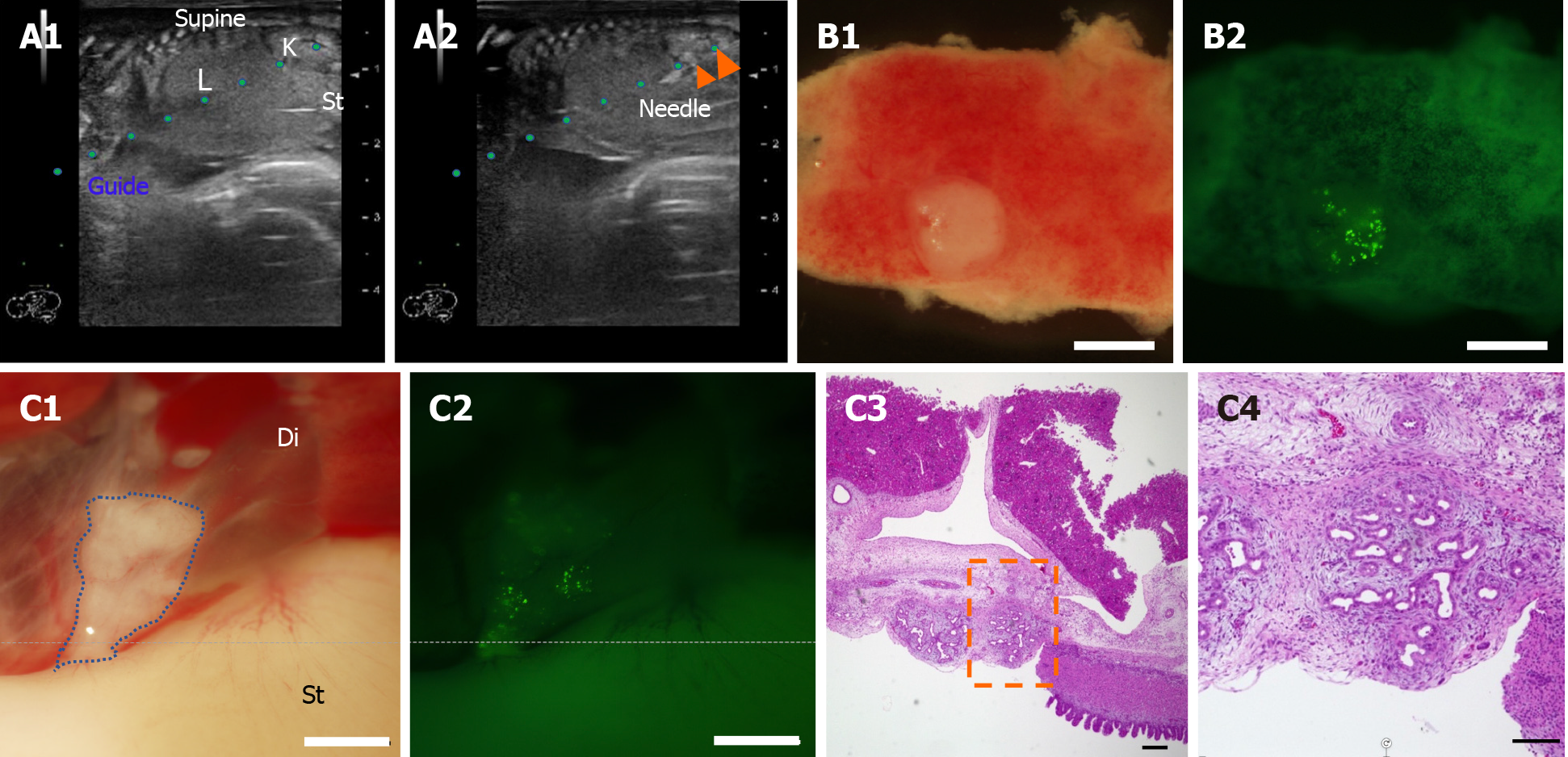Copyright
©The Author(s) 2021.
World J Diabetes. Apr 15, 2021; 12(4): 306-330
Published online Apr 15, 2021. doi: 10.4239/wjd.v12.i4.306
Published online Apr 15, 2021. doi: 10.4239/wjd.v12.i4.306
Figure 3 Ultrasound-guided fetal pancreatic tissue injection into a porcine fetus with organ niche.
A: The pancreas was harvested from the 40-d-old PDX1-Venus transgenic-pig fetus and minced. The minced-fetal pancreas was injected, under ultrasonographic guidance, through the uterine wall into the peritoneal cavity of a 40-d-old pig fetus. Peritoneal cavity of a 40-d-old pig fetus and a guide for the needle (A1). The needle was inserted into the omental foramen, and the minced-fetal pancreas was injected (A2); B: The minced-fetal pancreas was attached to the liver on day 14 (B1) and emitted green fluorescence (B2); C: The minced-fetal pancreas was attached under the diaphragm on day 14 (C1) and emitted green fluorescence (C2). Hematoxylin–eosin staining of the pancreas on day 14 (C3 and C4). The transplanted cells survived, and histological analyses confirmed the progressive development of the pancreatic ductal structures. (C4) comprises a higher magnification image of the region indicated by a black square in panel (C3). The time after birth is indicated in days. Scale bars: white, 1 mm; black, 5 µm. L: Liver; K: Kidney; St: Stomach; Di: Diaphragm.
- Citation: Nagaya M, Hasegawa K, Uchikura A, Nakano K, Watanabe M, Umeyama K, Matsunari H, Osafune K, Kobayashi E, Nakauchi H, Nagashima H. Feasibility of large experimental animal models in testing novel therapeutic strategies for diabetes. World J Diabetes 2021; 12(4): 306-330
- URL: https://www.wjgnet.com/1948-9358/full/v12/i4/306.htm
- DOI: https://dx.doi.org/10.4239/wjd.v12.i4.306









